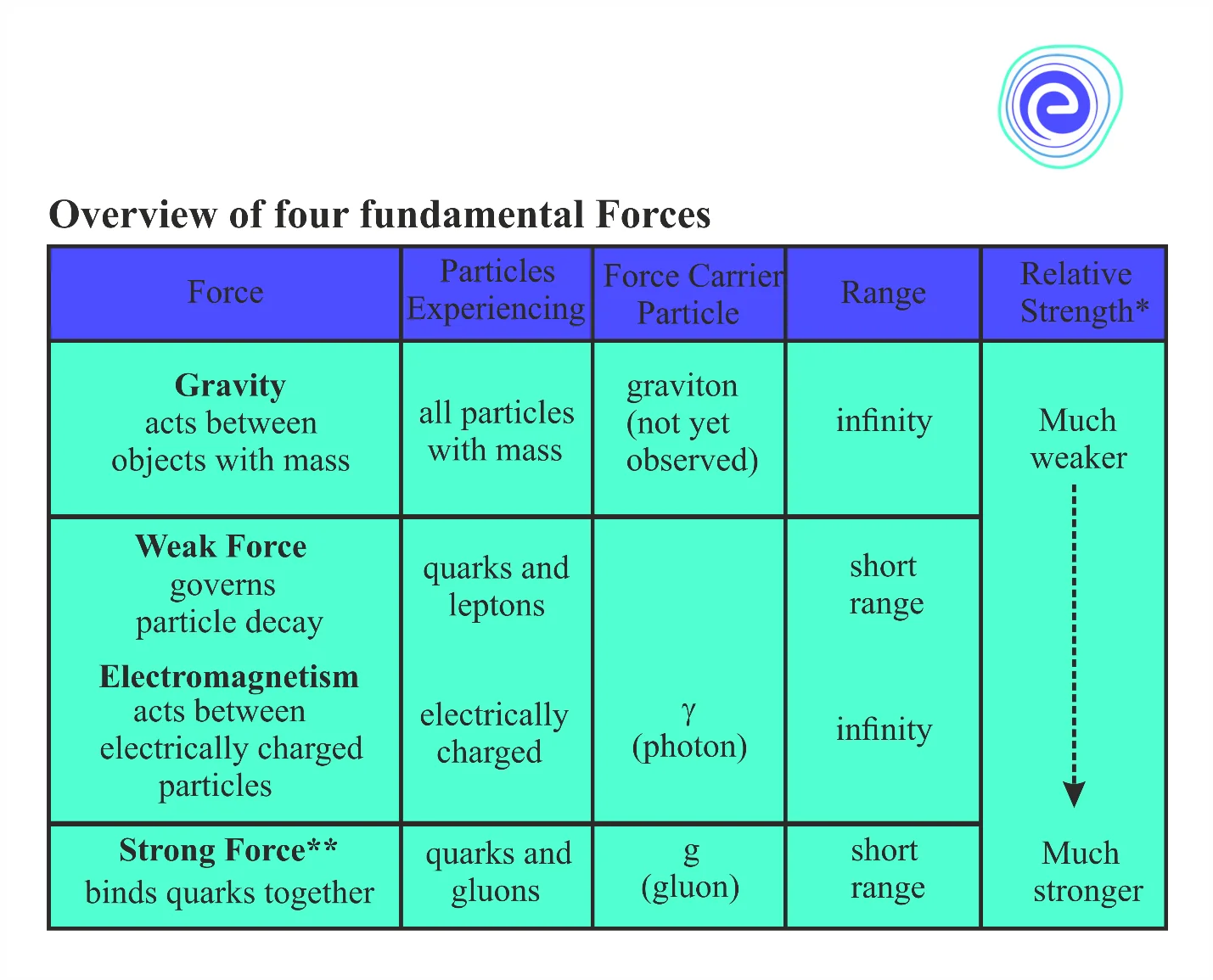- Written By
nikhil
- Last Modified 26-12-2024
Physical World: Scope of Physics, Nature of Physical Laws
Physical World: The “Physical World” refers to the world we see around us. It is the world that we perceive through our five senses. It has established laws that govern how things work, which are commonly referred to as physical sciences and laws of nature.
It is important to understand how this physical world operates, and the nature of these laws. To understand in detail what is Physics and its scope, and the nature of physical laws continue reading this article.
Learn 10th CBSE Exam Concepts
Physical World: Science and its Origin
Science is the systematic study of natural phenomena in order to predict, control, and modify them. Science entails investigating, experimenting, and speculating on phenomena that occur around us.
Science is derived from the Latin verb Scientia, which means ‘to know.’
The scientific method is a method for gaining knowledge in a systematic and in-depth manner. It entails:
- Systematic observations
- Controlled experiments
- Qualitative and Quantitative reasoning
- Mathematical modelling
- Prediction and verification (or falsification) of theories
- Speculation or Prediction
Timeline of Science
- 384-322 BC Aristotle lives. Many of his ideas are wrong but they dominated science for the next 2,000 years.
- 1543 Copernicus publishes his theory that the Earth orbits the Sun
- 1572 Tycho Brahe observes a supernova
Science in the 17th Century
- 1619 Kepler publishes three laws of planetary motion
- 1634 Galileo publishes a book about mechanics called Dialogue Concerning Two New Sciences
- 1687 Isaac Newton publishes Principia Mathematica
Science in the 18th Century
- 1704 Isaac Newton publishes a book about optics
- 1798 Henry Cavendish measures the density of the Earth
Science in the 19th Century
- 1859 The Origin of Species is published by Charles Darwin
- 1897 Joseph Thomson discovers the electron
- 1898 Marie Curie and Pierre Curie discover radium and polonium. Morris Travers and William Ramsay discover xenon.
Science in the 20th Century
- 1900 Max Planck proposes the quantum theory
- 1905 Einstein publishes his theory of Special Relativity
- 1910 Ernest Rutherford discovers the atomic nucleus
- 1927 Werner Heisenberg publishes his uncertainty principle
There is no final theory in science. Improved observations and accurate tools continue to improve knowledge and perspective. Tycho Brahe’s research on the planetary motion was used by Johannes Kepler to improve Nicolas Copernicus’ theory.
Understanding Physics
Physics is the study of fundamental natural laws and their manifestation in various natural phenomena. Physics is the study of the physical world and matter, as well as their motion through space and time, as well as related concepts like energy and force.
The term physics is derived from the Greek word phusik, which means “nature“
In Physics, there are two main types of approaches:
Unification: In this approach, all of the world’s phenomena are viewed as a collection of universal laws operating in various domains and conditions. For instance, the law of gravitation applies to both a falling apple from a tree and the motion of planets around the sun. All electric and magnetic phenomena are governed by electromagnetism laws.
Reduction: This method derives complex system properties from the properties and interactions of its constituent parts. For example, temperature studied under thermodynamics is also related to the average kinetic energy of molecules in a system (kinetic theory).
Scope of Physics
Physics has a broad scope because it encompasses quantities with length magnitudes ranging from \(10^{40} \mathrm{~m}\) or more (astronomical studies of the universe) to \(10^{-14} \mathrm{~m}\) or less (study of electrons, protons etc).
Similarly, the time scale ranges from \(10^{-22} \mathrm{~s}\) to \(10^{18} \mathrm{~s}\), and the mass scale ranges from \(10^{-30} \mathrm{~kg}\) to \(10^{55} \mathrm{~kg}\).
Based on its scope, physics is broadly divided into two types:
i) Macroscopic Domain: This encompasses phenomena at the laboratory, terrestrial and astronomical scales. Classical mechanics deals with the macroscopic domain.
Main branches of Classical physics:
ii) Microscopic Domain: This includes atomic, molecular and nuclear phenomena. Quantum mechanics deals with the microscopic domain.
Impact and Progress of Physics
- With a simple theory, it can explain a phenomenon that occurs on a large scale.
- Experiments and observations are used to develop new theories for previously unidentified phenomena and to improve existing theories for previously identified phenomena.
- Device development based on physical laws.
Hypothesis, Axiom and Models
A Hypothesis is a supposition that does not assume that it is true. It cannot be proven, but it can be validated through a series of experiments.
An Axiom is a self-evident truth that is accepted without debate or challenge.
A Model is a proposed theory that explains observed phenomena.
An Assumption is the foundation of physics, from which a variety of phenomena can be explained. These assumptions are formed through experiments, observations, and a large amount of statistical data.
Physics, Technology and Society
Physics, or the study of matter, energy, and their interactions, is a global endeavour that will play a critical role in human progress in the future. It is critical for all countries to support physics education and research because:
- Physics is an exciting intellectual adventure that inspires young people and pushes the boundaries of our understanding of Nature.
- Physics generates fundamental knowledge required for future technological advances that will continue to power the world’s economic engines.
- Physics contributes to the technological infrastructure by providing the trained personnel required to capitalise on scientific advances and discoveries.
- Physics is an important part of the education of chemists, engineers, and computer scientists, as well as other practitioners of physical and biomedical sciences.
- Physics broadens and deepens our understanding of other disciplines, including earth, agricultural, chemical, biological, and environmental sciences, as well as astrophysics and cosmology.
- Physics improves our quality of life by providing the fundamental understanding required for the development of new instruments and techniques.
To summarise, physics is an essential part of the educational system and of developed society for all of these reasons.
Fundamental Forces in Nature
1. Gravitational Force: This is the weakest force, but it has an infinite range. (Not included in the standard model.) Because mass is the source of gravitational force, it acts between any two pieces of matter in the Universe.
2. Weak Nuclear Force: The next weakest, but with a limited range. Radioactive decay and neutrino interactions are governed by weak nuclear force.
3. Electromagnetic Force: More powerful and has an infinite range. The electromagnetic force produces electric and magnetic effects such as the attraction of like electrical charges or the interaction of bar magnets.
4. Strong Nuclear Force: The most powerful but with the shortest range. The Strong Nuclear Force is in charge of holding atom nuclei together.
Overview of Four Fundamental Forces
Nature of Physical Laws
In any physical phenomenon under different forces of nature, there are many quantities that may change with time but there are also some specific physical quantities that remain constant or conserved with time therefore physical quantities which remains constant with time are called conserved quantities.
In physics, we have the following conservation laws:
- Law of conservation of Energy
- Law of conservation of Mass
- Law of conservation of Charge
- Law of conservation Linear Momentum
- Law of conservation of Angular momentum
Summary
Physics is the study of nature’s fundamental laws and their manifestation in various phenomena. The fundamental laws of physics are universal and apply in a wide range of contexts and conditions. The scope of physics is broad, encompassing a vast range of magnitudes of physical quantities. Physics and technology are inextricably linked.
Sometimes new physics emerges from technology, and other times new technology emerges from physics. Both have an immediate impact on society. In nature, four fundamental forces govern the various phenomena of the macroscopic and microscopic worlds. These are the ‘gravitational force,’ ‘electromagnetic force, ‘strong nuclear force,’ and ‘weak nuclear force,’ respectively.
The unification of various forces/domains in nature is a fundamental quest in Physics. Conserved quantities are physical quantities that remain unchanged during a process. The laws of conservation of mass, energy, linear momentum, angular momentum, charge, parity, and so on are examples of general conservation laws in nature.
Some conservation laws apply to one fundamental force but not the other. Conservation laws are inextricably linked to natural symmetries. Space and time symmetries, as well as other types of symmetries, play an important role in modern theories of fundamental forces in nature.
Frequently Asked Questions (FAQs)
Below are the frequently asked questions on Physical World:
Q.1. What is the scope of Physics?
Ans: The scope of physics deals with the magnitude of physical quantities like energy, mass etc. The scope of physics is best understood under the three disciplines Microscopic, Mesoscopic and Macroscopic phenomena.
Q.2. Name the fundamental forces in nature?
Ans:
- Gravitational Force
- Weak Nuclear Force
- Electromagnetic Force
- Strong Nuclear Force
Q.3. What are macroscopic and microscopic domains of physics?
Ans: Based on its scope Physics is divided mainly into two domains:
i) Macroscopic domain: This encompasses phenomena at the laboratory, terrestrial and astronomical scales. Classical mechanics deals with the macroscopic domain.
ii) Microscopic domain: This includes atomic, molecular and nuclear phenomena. Quantum mechanics deals with the microscopic domain.
Q.4. What is a weak nuclear force?
Ans: Weak nuclear force comes into play only between elementary particles involved in nuclear processes such as \(β\)-decay of a nucleus.
Q.5. Which force is the strongest but has a very short range?
Ans: Strong nuclear force is the strongest of all the forces but works over a very short range.
Practice 10th CBSE Exam Questions
We hope this article on Physical World helps you in your study. Let us know if you face any difficulty. We will get back to you at the earliest.
Stay tuned to embibe for the latest update of CBSE Class 10 exams.












































